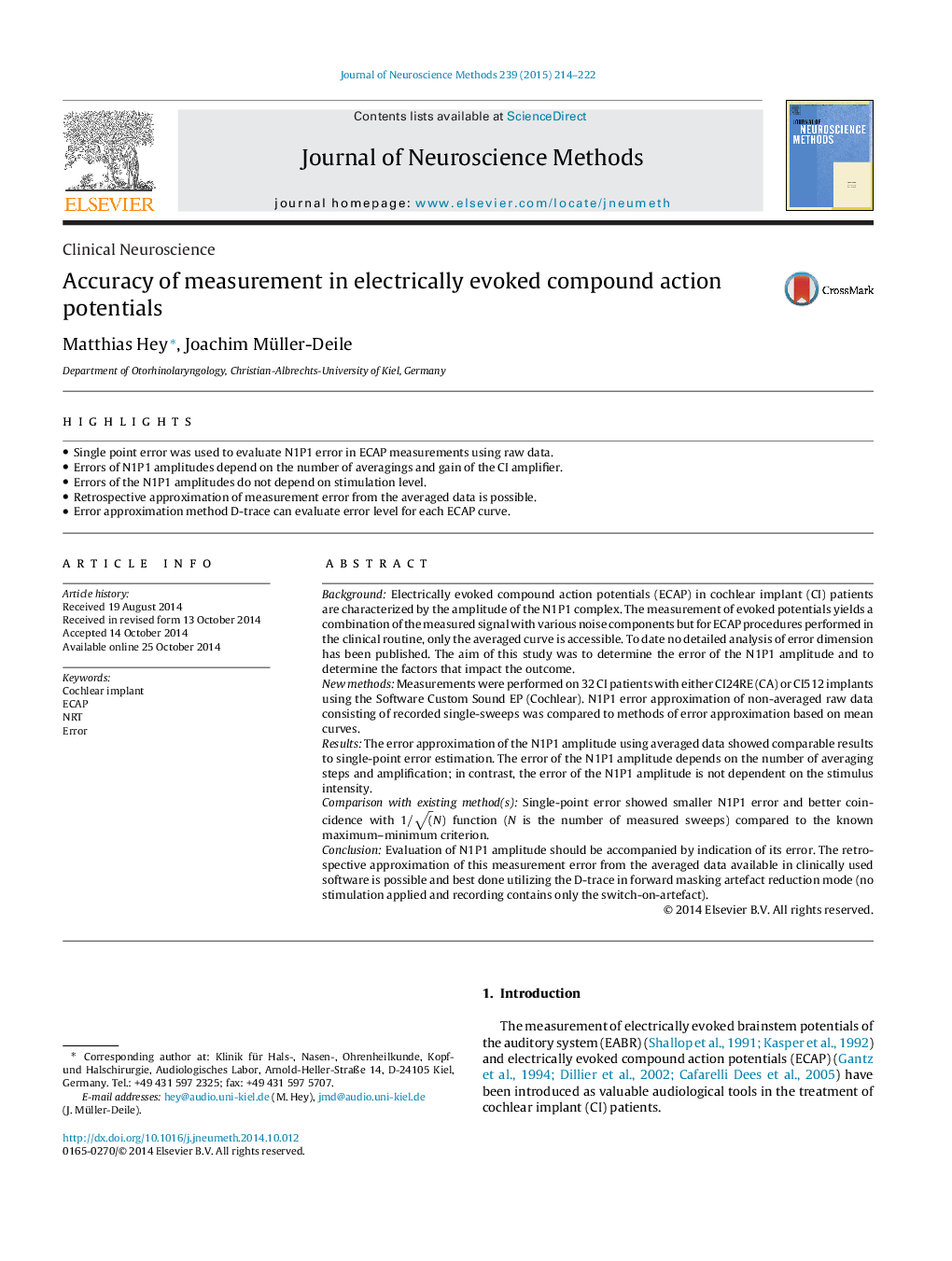| کد مقاله | کد نشریه | سال انتشار | مقاله انگلیسی | نسخه تمام متن |
|---|---|---|---|---|
| 6268559 | 1614630 | 2015 | 9 صفحه PDF | دانلود رایگان |
highlights
- Single point error was used to evaluate N1P1 error in ECAP measurements using raw data.
- Errors of N1P1 amplitudes depend on the number of averagings and gain of the CI amplifier.
- Errors of the N1P1 amplitudes do not depend on stimulation level.
- Retrospective approximation of measurement error from the averaged data is possible.
- Error approximation method D-trace can evaluate error level for each ECAP curve.
BackgroundElectrically evoked compound action potentials (ECAP) in cochlear implant (CI) patients are characterized by the amplitude of the N1P1 complex. The measurement of evoked potentials yields a combination of the measured signal with various noise components but for ECAP procedures performed in the clinical routine, only the averaged curve is accessible. To date no detailed analysis of error dimension has been published. The aim of this study was to determine the error of the N1P1 amplitude and to determine the factors that impact the outcome.New methodsMeasurements were performed on 32 CI patients with either CI24RE (CA) or CI512 implants using the Software Custom Sound EP (Cochlear). N1P1 error approximation of non-averaged raw data consisting of recorded single-sweeps was compared to methods of error approximation based on mean curves.ResultsThe error approximation of the N1P1 amplitude using averaged data showed comparable results to single-point error estimation. The error of the N1P1 amplitude depends on the number of averaging steps and amplification; in contrast, the error of the N1P1 amplitude is not dependent on the stimulus intensity.Comparison with existing method(s)Single-point error showed smaller N1P1 error and better coincidence with 1/(N) function (N is the number of measured sweeps) compared to the known maximum-minimum criterion.ConclusionEvaluation of N1P1 amplitude should be accompanied by indication of its error. The retrospective approximation of this measurement error from the averaged data available in clinically used software is possible and best done utilizing the D-trace in forward masking artefact reduction mode (no stimulation applied and recording contains only the switch-on-artefact).
Journal: Journal of Neuroscience Methods - Volume 239, 15 January 2015, Pages 214-222
